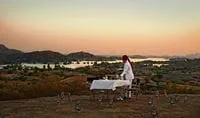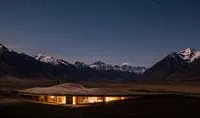How to avoid an avalanche

Here are a few insights into minimising the risk of being caught in an avalanche. Please view it not as a definitive guide, but merely a catalyst to stimulate your interest and then go and research it properly with the help of professionals. Experts in avalanche science often find that the more they learn, the more they have yet to understand.
Avalanches are a very real risk to off-piste skiers. The resorts tend not to publicise the accidents that do happen and the risks can consequently be understated. There have been several accidents and deaths already this winter, in places where you might find yourself skiing. Nevertheless, for most good skiers, getting off-piste and finding fresh tracks is the holy grail of skiing and if you understand the risks and respect them, they can be minimised and skiing off-piste can be enjoyed in relative safety.
Since snowboarding stormed onto the scene and skis got fatter, riding powder has never been more accessible, more popular or more fashionable and the risks run have significantly increased as many more people are venturing off-piste, many of them showing scant regard for their safety and that of others.
You may have seen videos of professional skiers and snowboarders successfully riding out of avalanches. Videos give little idea of how fast these guys are going and for mere mortals, out-riding an avalanche is not an option. If you are buried in an avalanche, you have approximately 15 minutes to be dug out, after which you are unlikely to survive. If you have ever tried walking back up a mountain in deep powder, you will know how little distance you can cover in 15 minutes. Imagine trying to do this, panicking after a friend has been buried and you will realise that avoiding the scenario altogether is vastly preferable.
Checklist
- Check the detailed avalanche forecast (not just the score out of 5) against your planned route.
- Think about group size. Typically 3-5 is the best balance of safety in numbers and not too much of a crowd.
- Ski with a guide or instructor. Even if you know a lot about avalanche science, unless you're living in the area, you can't know how the snowpack has evolved over time and what risks it'll present.
- The right equipment is essential. Probe, shovel and transceiver are indispensable and positive research on Avalungs and ABS airbag systems mean they should be seriously considered.
- If you have a transceiver, ensure you know how to use it. Many resorts have transceiver training areas (often free) now, so next time you are skiing take some time out to practice using it.
What causes avalanches and where do they occur?
Avalanches happen for numerous different reasons, many of which are easy to recognise in hindsight but can be much more difficult to forecast.
- Ideal skiing conditions! Joking apart, abundant, untracked fresh snow and runs equivalent to red runs or steeper are prime avalanche territory.
- A whole panoply of weather conditions – too warm, too cold, lots of snow, too little snow, where large temperature differentials occur between snow surface and ground level, rapid changes in temperature, strong winds etc. There are a thousand different reasons for an avalanche to occur so unless you understand all of these, ski with a professional.
- Avoid slopes where wind has caused slabs of significant accumulations.
- There are many more factors that determine which slopes are riskier – convexity, altitude and orientation to name but a few.
Once on the mountain
- Never put pressure on the guide. Guides are human and if they are too aware of how much you have paid and how much you want to ski fresh snow (and they will want to too!), they may take a chance against their better judgement.
- Plan your route and avoid the most hazardous areas.
Think about what will happen if the slope should slide
- Where will an avalanche go and are you endangering others? (Are there pistes, roads, houses or restaurants in its likely path?)
- Are there any ‘islands of safety’? These are usually on top of ridges, rocks or outcrops – anywhere without a large accumulation of snow above you. Use these places to stop and wait.
- Avoid ‘terrain traps’ where snow is likely to funnel in to.
- Keep plenty of distance between skiers so that if a slide should happen, the risk of multiple people being buried is minimised.
- Always be prepared to say no and turn around if you are at all unsure. Your gut feeling will usually be right.
This is only the tip of the iceberg in terms of understanding avalanches, if you are interested in learning more about avalanche safety, our Ski team can put you in contact with the best guides and instructors in each of our resorts.
We also recommend Henry’s Avalanche Talk in Val d’Isère. Henry has been training people on avalanche safety for years and his talk in Val d’Isère costs only €9.50.
Click here for more details…
Call us on 212 372 7009 to start planning your holiday
Why Scott Dunn?
Unique to You

- We listen to your travel goals and craft unique trips that are bespoke to you.
- We’re with you every step of your life’s travel journey, from honeymoons to family trips and beyond.
Seamless Service

- Global offices in the UK, US, and Singapore for 24/7 seamless service.
- We offer flexibility if your plans change so you can book with confidence and peace of mind.
Carefully Curated Collection

- We’ve curated an elevated collection of accommodation, experiences, and guides.
- Committed to fostering close global relationships to continue bringing you unique experiences.
Luxury in Every Sense

- We deliver a sense of luxury that matters most to you.
- Awarded Condé Nast Traveller’s Top Travel Specialists in the World 12 years in a row.


